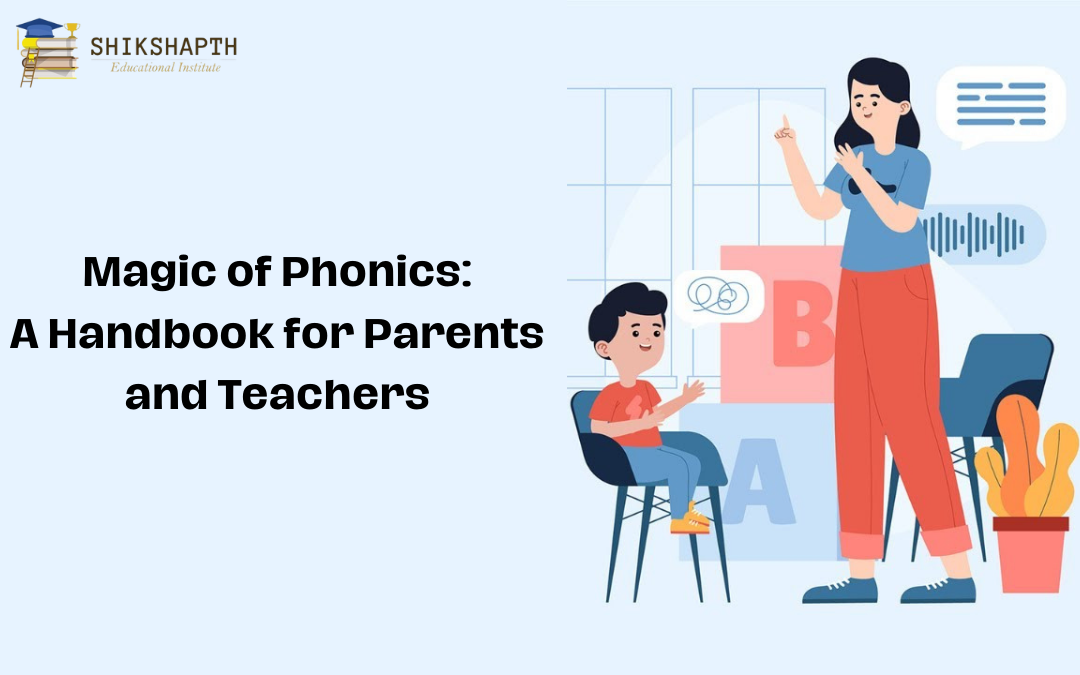Phonics is a vital component of early literacy education, helping children understand how letters are linked to sounds (phonemes) to form letter-sound relationships. This foundational knowledge is crucial for reading fluency and comprehension. In this blog, we’ll explore the essential elements of phonics that every parent and educator should know, focusing on key concepts like vowels, consonants, and the intriguing rules of the English language.
In-Depth Exploration of Phonics: Decoding the Language of Sounds
1. Vowels in Syllables: The Building Blocks of Words
The journey into phonics begins with an understanding of syllables, the core units of spoken language. Central to each syllable is a vowel sound, acting as its pulse. This foundational concept is essential for grasping the mechanics of language:
- Essential Vowel Sounds: Vowel sounds are the soul of syllables. Every syllable across the vast array of words in English, from the simplest to the most complex, is built around at least one vowel sound. This rule is not just a linguistic curiosity; it is the cornerstone of how words are formed and pronounced.
- Vowel Positions: Vowels exhibit an impressive range of placements within syllables. They can be the lone sound in a syllable, providing a clear, unobstructed tone, like the solitary ‘o’ in ‘go’. Alternatively, they can be nestled amid consonants, adding depth and complexity to the syllable, as seen in the word ‘strap’.
2. The Dynamics of Short and Long Vowels
Vowels are dynamic characters in the story of phonics, capable of altering their sounds:
- Short Sounds: The concept of closed syllables introduces us to short vowel sounds. In these syllables, a vowel is immediately followed by a consonant, leading the vowel to produce a shorter, more abrupt sound. This phenomenon is evident in words like ‘bed’, where the ‘e’ is curt, and ‘sit’, where the ‘i’ is equally brief.
- Long Sounds: In stark contrast, open syllables, where the vowel is not followed by a consonant, allow vowels to stretch their sounds. This elongation of the vowel sound is clear in words like ‘hi’, where the ‘i’ resonates longer, and ‘go’, where the ‘o’ extends its sound.
Also Read – What is Phonics?
3. The Magic of the Silent ‘E’
The Silent ‘E’ Rule adds a layer of enchantment to phonics:
- Transforming Vowels: The silent ‘e’ is a powerful force in phonics, often altering the sound of the vowel preceding it. It’s a phonetic sleight of hand that changes a vowel’s sound from short to long, as seen in the transition from ‘hop’ to ‘hope’.
4. Consonant Blends and Digraphs: Enhancing Phonemic Awareness
The study of consonant blends and digraphs is crucial for reading and pronunciation skills:
- Consonant Digraphs: These are pairs of consonants that join forces to create a single, distinct sound. Examples like ‘sh’ in ‘ship’ and ‘th’ in ‘think’ demonstrate how two letters can merge phonetically to produce a unique sound.
- Consonant Blends: Here, we encounter groups of consonants where each consonant retains its sound, but they blend harmoniously. Examples like ‘spl’ in ‘splash’ and ‘gr’ in ‘grape’ showcase this blending without losing individual consonant sounds.
5. Exploring Vowel Digraphs and Diphthongs
The realm of vowel combinations opens up fascinating sound variations:
- Vowel Digraphs: These involve two vowels side-by-side, usually resulting in the first vowel pronouncing its long sound. The ‘ee’ in ‘feet’ and ‘ai’ in ‘rain’ are prime examples where two vowels come together to create a harmonious sound.
- Diphthongs: These are unique combinations where two vowels unite to produce a gliding sound, transitioning smoothly from one vowel sound to another. This is beautifully illustrated in words like ‘toy’ (with the ‘oy’ sound) and ‘cow’ (with the ‘ow’ sound).
6. The Power of R-Controlled Vowels
‘R-controlled’ vowels occupy a special niche in phonics studies:
- Bossy ‘R’: When a vowel is followed by the letter ‘r’, it alters the vowel’s sound, leading to a unique pronunciation. This effect is evident in words like ‘car’, where ‘ar’ creates a distinct sound, ‘bird’, where ‘ir’ changes the usual sound of ‘i’, and ‘turn’, where ‘ur’ gives a new quality to the sound of ‘u’.
7. The Schwa Sound: The Chameleon of Phonics
- The Schwa Sound: Often overlooked, the schwa sound is a subtle, unstressed sound made by any vowel, typically found in unaccented syllables. It’s a linguistic chameleon, appearing in a wide array of words and often sounding like a quick ‘uh’ or ‘ih’. This sound is prevalent in the English language, noticeable in the first ‘a’ of ‘sofa’ or the ‘u’ in ‘supply’.
Conclusion
Phonics is an essential skill for developing reading proficiency. By understanding these key concepts, parents and educators can effectively support children’s literacy journey. Remember, every child’s learning path is unique, so patience and encouragement are key. Happy teaching and learning!




Recent Comments